
Corn Around the World
Orange Corn Inspiration with a Global Flair
While you probably already have your favorite go-to recipes with Professor Torbert’s Orange Corn like shrimp and grits, cornbread, and corn dogs, there are many hidden gems from other regions of the world that may not be a part of your typical cooking repertoire. A seasoned traveler, corn has migrated across the globe and has been incorporated into almost every cuisine – Italian, German, Caribbean, African, Latin American and more. If you’re interested in trying something new this week, take a trip around the world with us for some global Orange Corn inspiration!
Central and South America
Countless recipes and dishes incorporating corn have originated from Central and South America. As you may already know from our history of corn blog, corn was originally bred in what is now present-day Mexico. From there, it spread throughout the Americas as people and civilizations evolved. With corn being a staple crop in the region, it can be found in numerous Central and South American recipes that are still popular today.
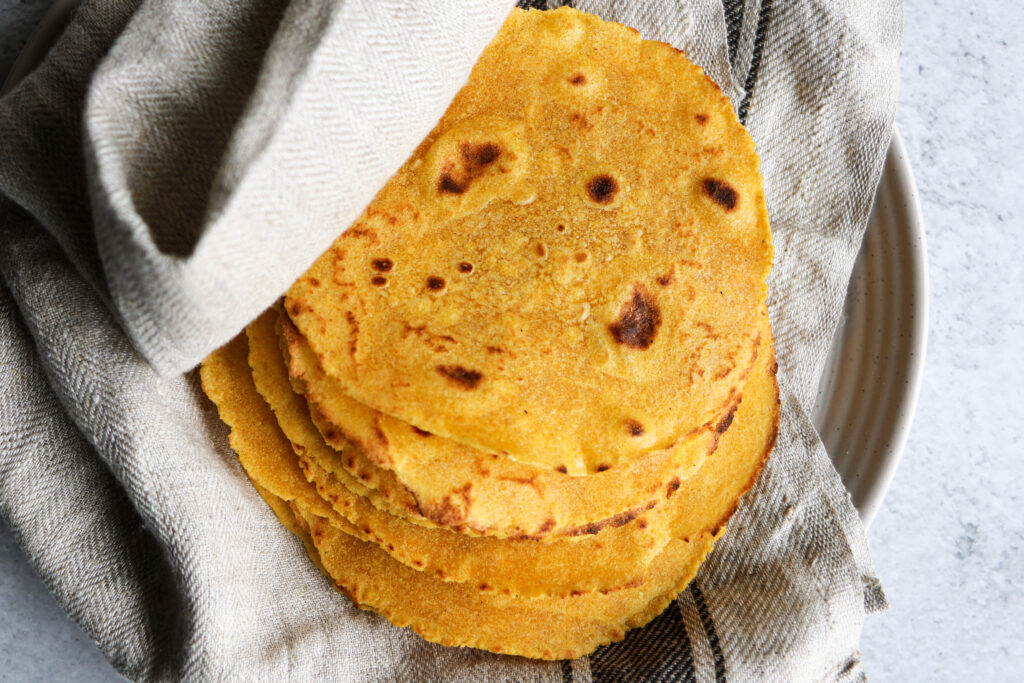
One of the oldest and best-known dishes of the region is the tortilla. Typically, tortilla recipes call for masa harina, a nixtamalized ground corn that helps glue the tortillas together. While Professor Torbert’s Orange Corn flour is not nixtamalized, our easy traditional tortilla recipe includes the gluten from all-purpose flour to keep the tortillas together and provides the best of both worlds – the flavor or corn tortillas and the texture of flour tortillas.
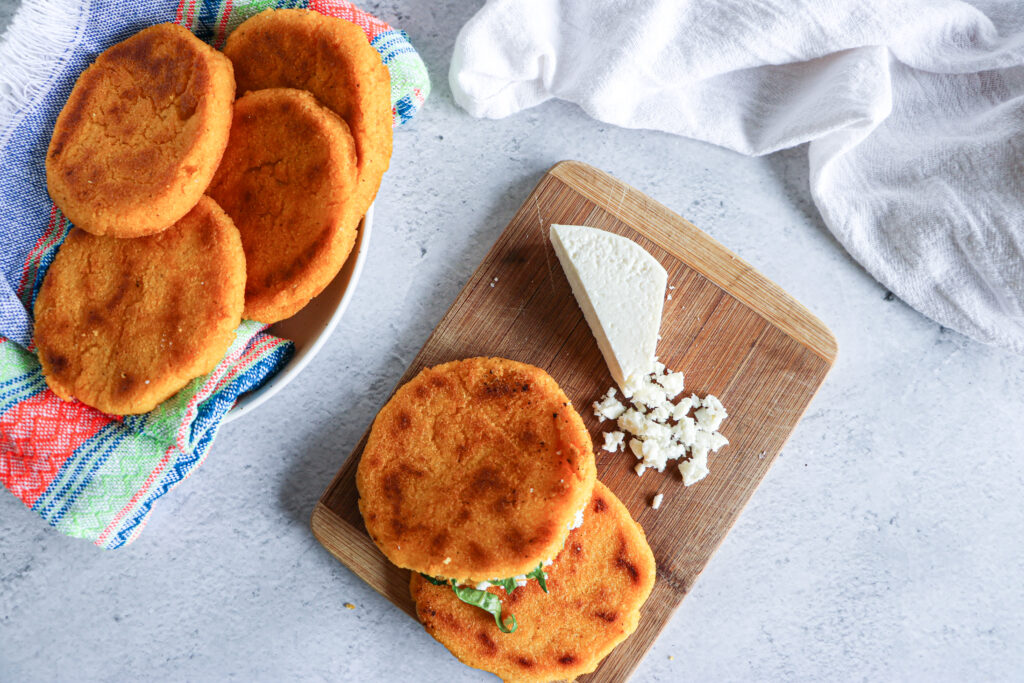
Arepas are another well-known dish from South America that are a great addition to your recipe collection. These delicious cornmeal cakes can be found in several South American countries – from Venezuela to Colombia to Bolivia. The corn meal in the dough adds a delicious crunch to the outside. Due to their mild flavor, arepas can be filled with anything from chicken to vegetables, eggs or ham. A perfect dish for any time of day!
Europe
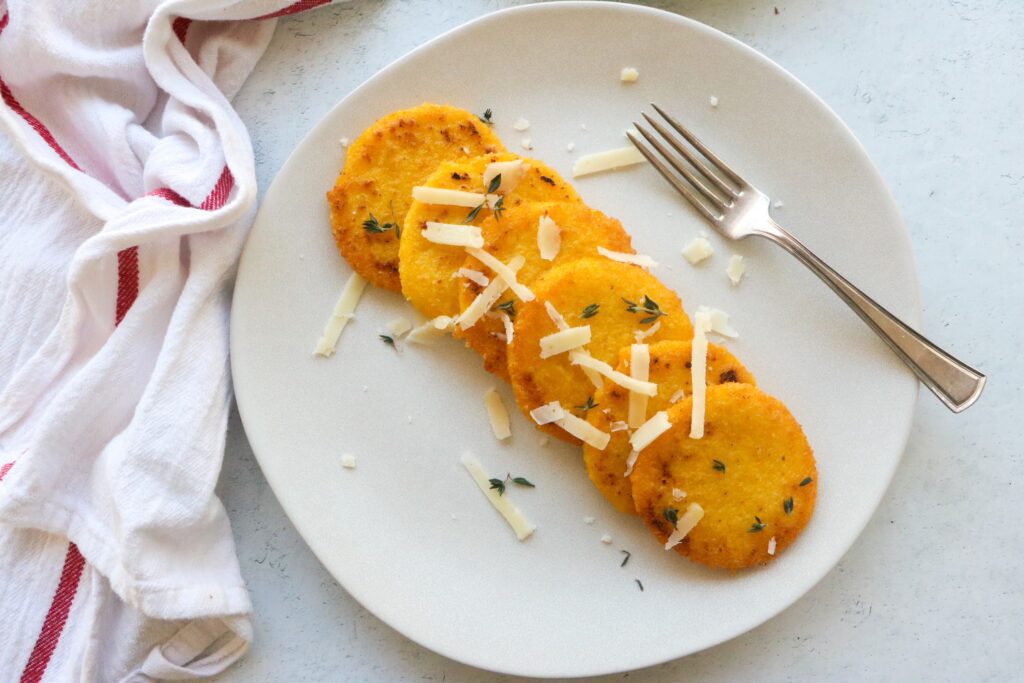
Corn is also incorporated into a variety of recipes throughout Europe as well, each country adding their own distinct flavors. In the 1500s, European settlers discovered the value of corn from the Native American civilizations they encountered in the Americas and brought the crop back to Spain where it then spread throughout Europe and has been used for centuries in a variety of recipes and dishes. Polenta, for example, is an Italian cornmeal porridge similar to grits originally made from flinty yellow corn. The culture around polenta however has become more important than the kind of corn used. Today, there are many options to choose from, including Professor Torbert’s polenta-grind grits. As explained in our post, Polenta and Grits and Flour – Oh My! polenta was originally thought of as a dish for the poor and lower classes, but over time has become a staple of Italian cuisine. It can be prepared with herbs or bolognese, or cooked very thick, sliced, and pan fried. Some of our favorite polenta recipes include our bolognese sauce with polenta and our polenta cakes. Both highlight the delicious taste and texture of Professor Torbert’s Orange Corn and the versatility of polenta!
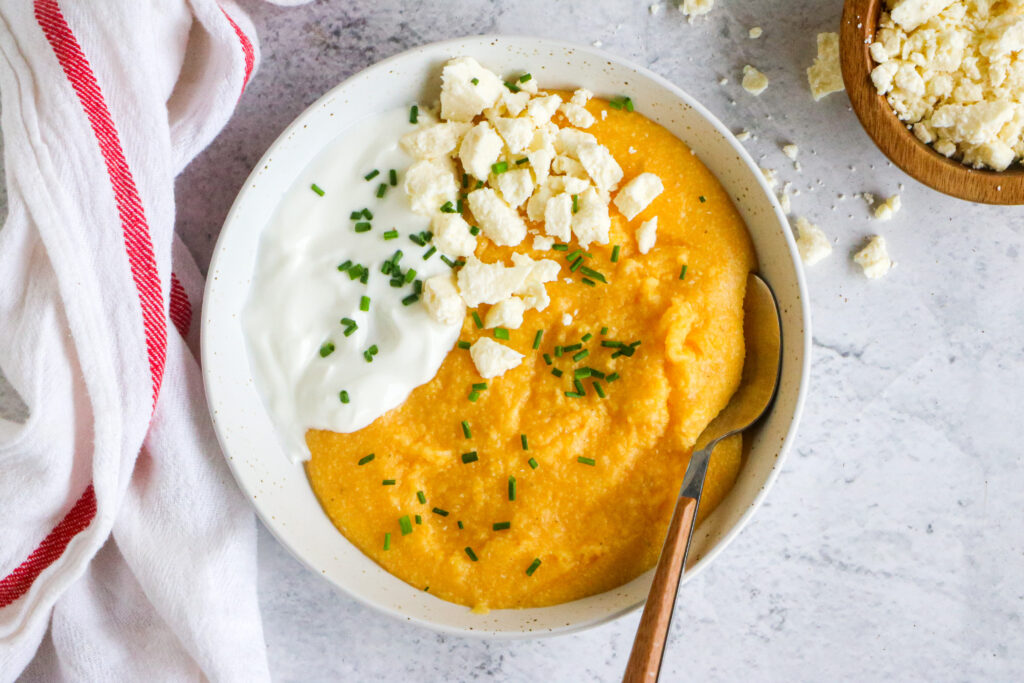
Another variation of polenta from Romania is mămăligă. An ancient dish, mămăligă began as peasant food, but is now a popular meal throughout the region that is even served in fine dining restaurants. Traditional mămăligă is a classic porridge, typically served with sour cream and feta. This comfort food can additionally be customized with many different ingredients including eggs, fried sausages and more. Mămăligă can also be found throughout in Moldova, Western Ukraine, and the Black Sea region in countries such as Georgia and Turkey.
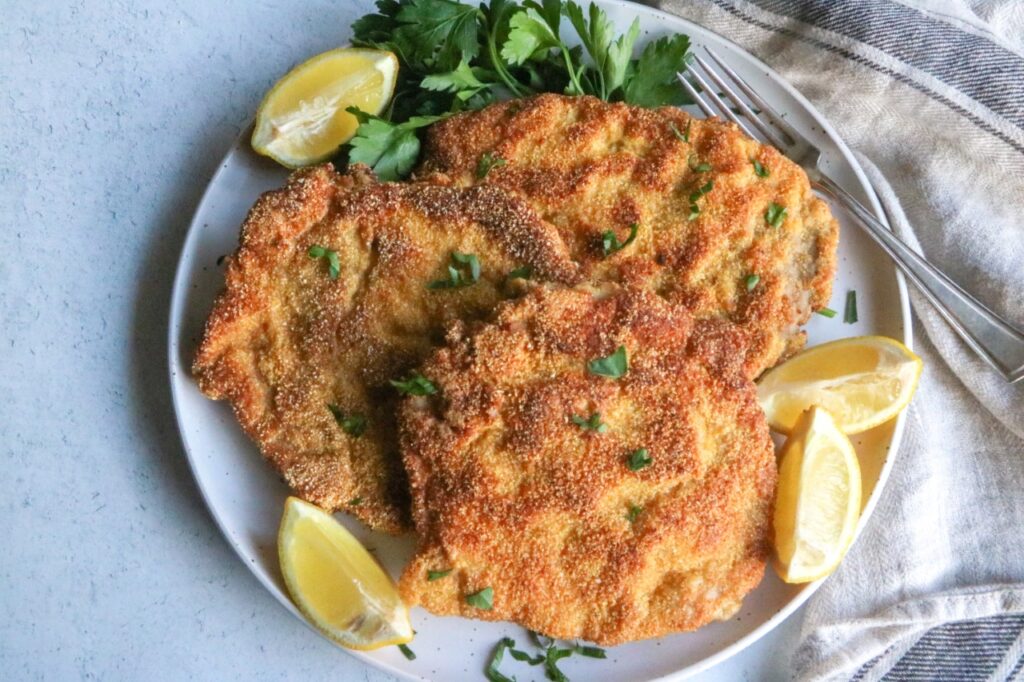
Schnitzel is a traditional dish in German-speaking Europe. Variations of the recipe are found in Germany, Austria, Switzerland, and more. Schnitzel typically consists of a thin slice of meat coated with a corn meal or corn flour breading and fried. It is delicious served with a salad, potatoes or any side to your liking for a complete meal. Try it for your next Oktoberfest celebration or whenever you need a warm meal on a cold day!
Africa
Another region of the world where Orange Corn specifically is becoming more prevalent is the Sub-Saharan region of Africa. Since 2003 Professor Torbert has partnered with HarvestPlus, the global leader improving nutrition and public health through nutritionally enhanced food crops, to bring Orange Corn to Sub-Saharan Africa. It is currently grown in more than 10 African countries and continues to be used in a variety of products and recipes in the region.
An example of African food products using Orange Corn comes from Nigeria. If you’ve been following our blog posts, you know our founders Torbert and Evan Rocheford have had the pleasure of mentoring fellows of the Mandela Washington Fellowship Program. Recent fellow, Immaculate Nwajagu, MNIFST, MNSN, MASN from Nigeria, is the founder of Food Maestro, a start-up that focuses on creating access to sustainable and nutritious food sources. Her company launched a new food brand, Cozy Foods which aims to provide comfort in nutrition. Cozy Foods product line currently produces pap flour made with Orange Corn sourced in her local market. Pap is a staple in African households and provides a nutritious instant breakfast that resembles a pudding. Orange Corn is also found in several other meals and dishes in Nigeria including: moi-moi (a corn-based porridge), various cornmeal recipes, corn cakes, and corn snacks.
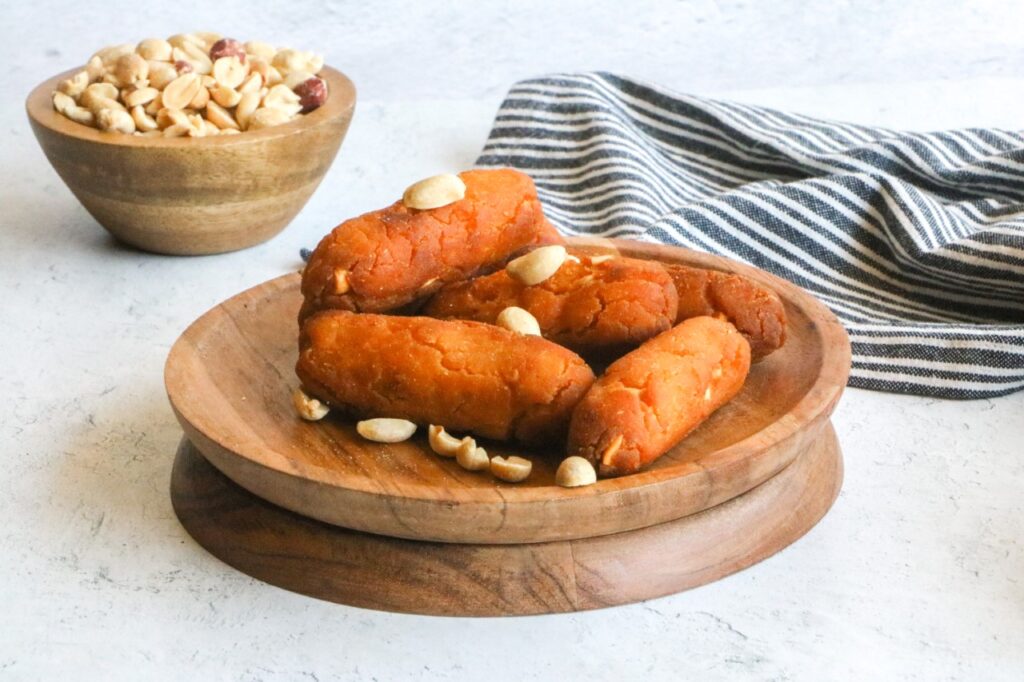
If you’re looking for something sweet to try, another classic African treat that only requires a handful of ingredients and is fun to make is awiesu, a delicious snack from Ghana. These corn flour doughnuts are crunchy on the outside and soft on the inside with a rich buttery flavor. Awiesu is a favorite street snack in Ghana that would also be great as an afternoon treat or after-dinner dessert.
Caribbean
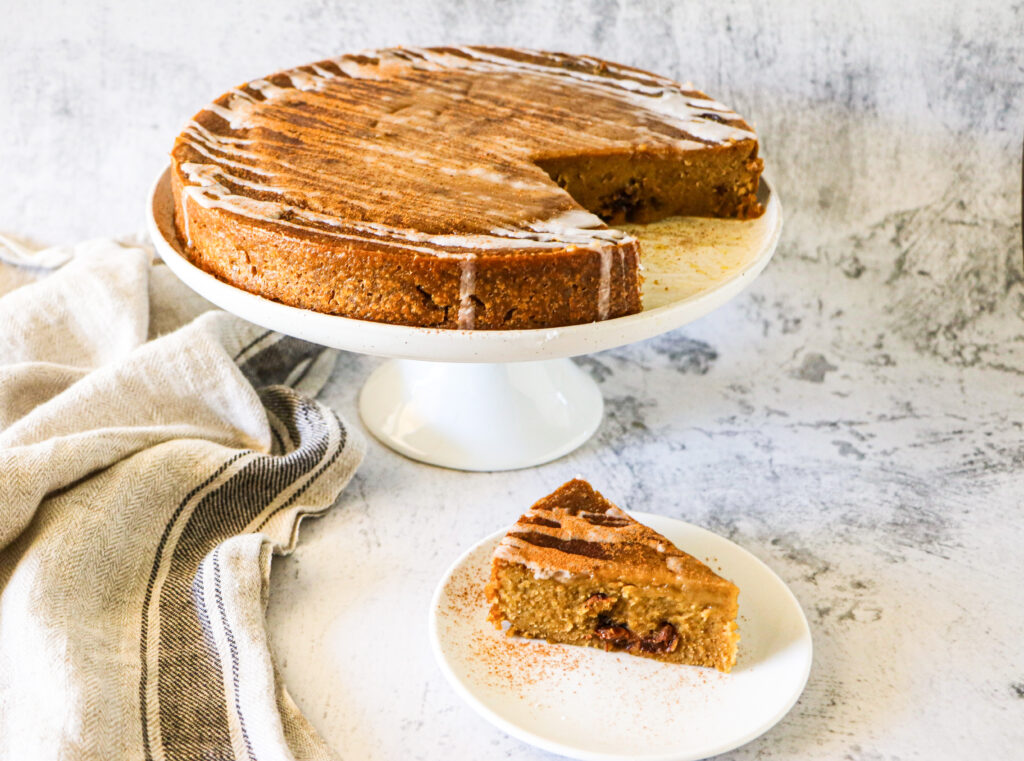
Corn is also a staple ingredient in many Caribbean dishes and recipes. It’s used to make everything from corn meal porridge to coo coo (a Caribbean version of polenta). A popular dessert in Jamaica is cornmeal pudding – a firm type of pudding using corn meal and spices. Our version includes raisins, warming spices and a splash of rum to kick it up a notch! This island classic is perfectly moist and an indulgence everyone will enjoy, especially around the holidays!
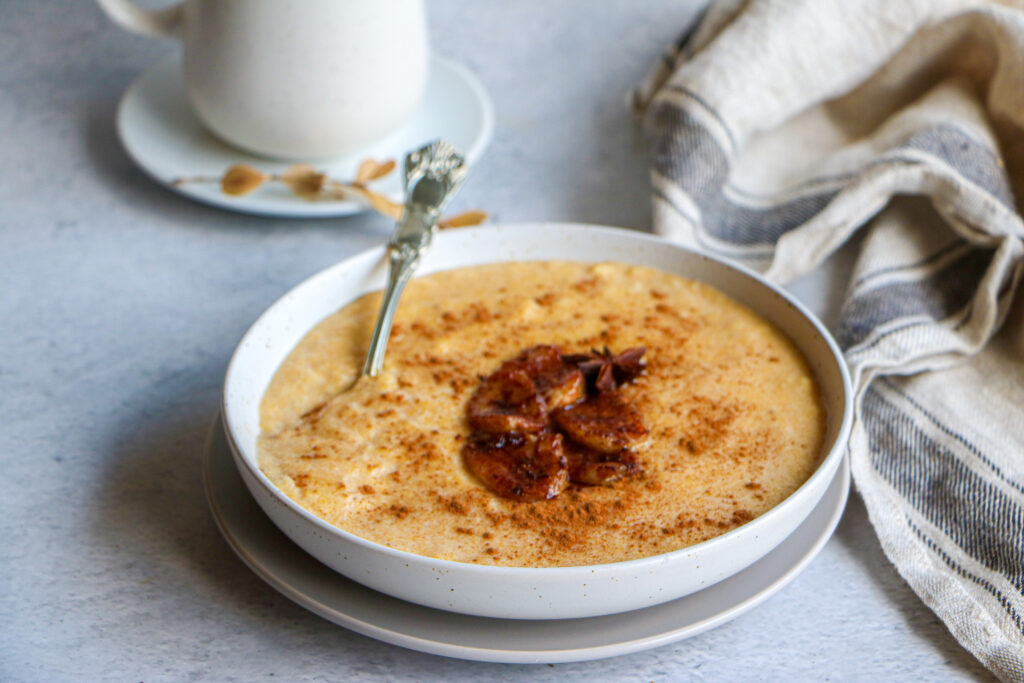
Labouyi Mayi is another warming, creamy Caribbean recipe that’s a favorite for breakfast. This Haitian Creole corn porridge is made with spices, plantains and coconuts. A simple recipe, Labouyi Mayi can be made in under 30 minutes and is delicious enough to be enjoyed any time of day.
A World Full of Corn
A versatile pantry staple, corn is a tasty ingredient that works well in all types of flavor profiles and recipes from savory, to sweet, breakfast to dinner. The next time you’re looking for something new to try, take a trip around the globe and try out any one (or more) or our delicious Orange Corn recipes. For more cooking inspiration, check out our recipe library for everything from international delights to imaginative desserts, delicious fry batters, breadings, baking, and more.
